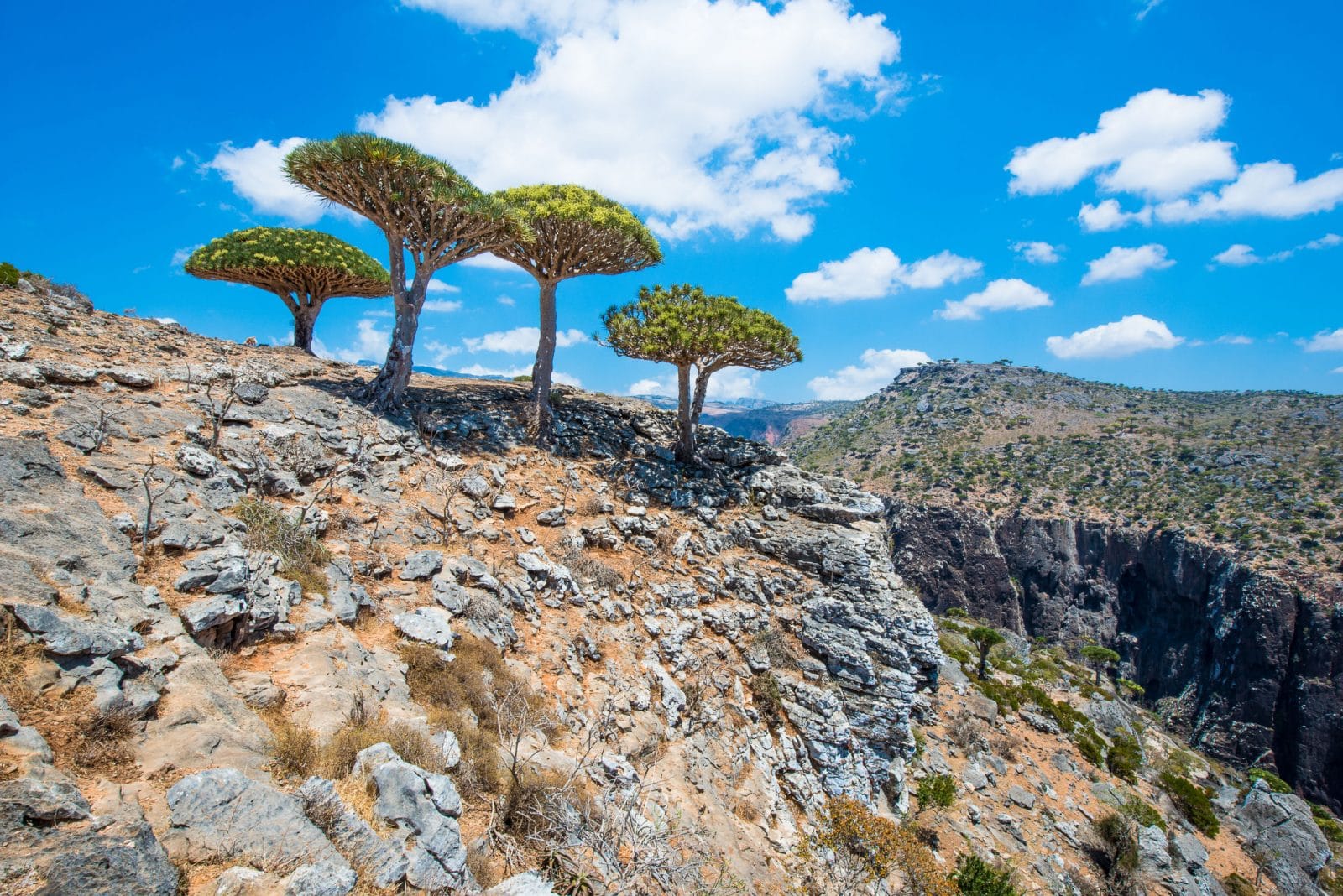The trees in Socotra look like the umbrellas of giant frogs. The animals here are considered as quite strange. The plants and environment are unlike anywhere else in the world. You will feel like another planet or a different world altogether.

You might think aliens live here. This place is called Socotra. Deep Socotra rises on the shores of the Arabian Sea off Yemen. Long ago, Arab sailors lived here. Ships from Socotra used to travel around the world to supply sugar. The trees that look like frog umbrellas have a sticky substance like blood in them. This is used in ointments, medicines, and lipsticks. These trees can grow up to 32 feet tall. Socotra is also home to many colorful flowers.
Socotra is special not only because of its trees but also its animals. Strange birds, legless lizards, reptiles, and other unique animals live here. Out of 31 species of animals in Socotra, 29 are found nowhere else in the world.
About 50,000 people live in Socotra. They earn their living by fishing, growing palms, and raising animals. They have their own language and culture, which is slowly disappearing. Before there was an airport, ships were the only way to reach Socotra.
There are a few guest houses for tourists, but no high-quality hotels. Public transport is limited, so you need to explore the island on foot. The best time to visit is from October to April. Unfortunately, deforestation and climate change are starting to harm this unique place.
